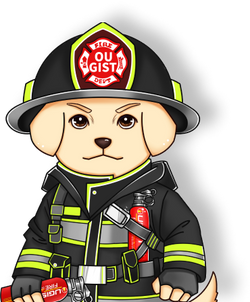
Fire safety is a critical aspect of protecting life and property, and having the right fire extinguisher on hand is essential in combating different types of fires effectively. Class A fire extinguishers are one of the most common and versatile types of fire extinguishers, specifically designed to tackle fires involving ordinary combustible materials. In this blog, we will delve into the features and applications of Class A fire extinguishers, understanding why they are indispensable tools in fire safety.
Class A Fires: The Basics
Class A fires involve ordinary combustible materials that are commonly found in both residential and commercial settings. These materials include wood, paper, cloth, plastics, rubber, and other organic substances. Class A fires are characterized by the presence of glowing embers and the formation of ash and debris as they burn.
The Role of Class A Fire Extinguishers
Class A fire extinguishers are designed to suppress and extinguish fires involving ordinary combustibles. They typically use water, foam, or dry chemical agents as extinguishing agents. The primary objective of these extinguishers is to cool the burning material and remove heat, effectively breaking the fire's chain reaction.
Water-Based Class A Fire Extinguishers
Water-based Class A fire extinguishers are among the most common and traditional types used to combat ordinary fires. They are filled with water and pressurized with air, making them an eco-friendly option that is safe for the environment and human health.
When discharged onto a Class A fire, the water absorbs heat from the burning material, lowering its temperature below the ignition point. Additionally, the water creates a barrier between the fire and surrounding materials, preventing the flames from spreading further.
Foam-Based Class A Fire Extinguishers
Foam-based Class A fire extinguishers work similarly to water-based ones but have the added advantage of forming a foam blanket over the burning material. This foam suffocates the fire, effectively cutting off its oxygen supply and smothering the flames.
Dry Chemical Class A Fire Extinguishers
Dry chemical Class A fire extinguishers use a dry powder, such as monoammonium phosphate or ammonium sulfate, to extinguish fires. The dry chemical agent disrupts the chemical reaction of the fire and prevents it from spreading.
Applications of Class A Fire Extinguishers
Class A fire extinguishers are versatile and suitable for use in various settings, including homes, offices, schools, and public places. They are particularly useful for common fire hazards involving wood, paper, cloth, and other organic materials.

Conclusion
Class A fire extinguishers play a fundamental role in fire safety, providing an effective means of suppressing ordinary fires involving combustible materials. By understanding their application and having them readily available in key locations, we can enhance our ability to respond to fire emergencies promptly and protect ourselves and our properties from the devastating effects of Class A fires.
Remember, fire safety is a shared responsibility. Stay informed, stay prepared, and prioritize safety in every aspect of life!


